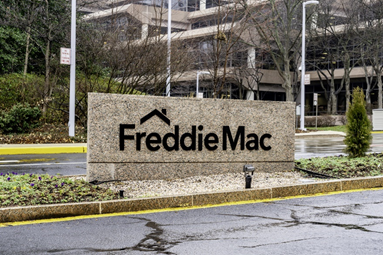What is Freddie Mac?
Federal Home Loan Mortgage Corp, popularly known as Freddie Mac, is a government-sponsored enterprise founded by the United States Congress in 1970. The public mission of providing liquidity, affordability and stability to the US housing market. Freddie Mac primarily engages in purchasing residential mortgage loans originated by lenders, which are then repackaged into guaranteed mortgage-related securities. These securities are sold in the global capital markets, thereby transferring interest-rate risk and liquidity risk to third-party investors. In addition, Freddie Mac also engages in the mortgage market through a few other roles. Freddie Mac shifts mortgage credit risk to third-party investors through its credit risk transfer programmes through securities and insurance-based offerings. It also invests in mortgage loans and securities that are tied to mortgages. The agency is not involved in lending money to mortgage borrowers.
Summary
- Federal Home Loan Mortgage Corp, popularly known as Freddie Mac.
- Freddie Mac is a government-sponsored enterprise founded by the United States Congress in 1970 with the public mission of providing liquidity, affordability and stability to the US housing market.
Frequently Asked Questions
What is the importance of Freddie Mac?
Through its activities, Freddie Mac improves liquidity in the multifamily mortgage market, resulting in better mortgage loan terms for US house buyers. Consequently, this benefits the US housing market and the broader economy. In addition, in cooperation with Federal Housing Finance Agency, another US-independent agency, Freddie Mac aims to create a better housing finance system in the United States.

© Jhvephotos | Megapixl.com
Freddie Mac makes mortgages into Mortgage-Backed Securities (MBS) and guarantees the timely payment of principal and interest- this attracts investors to the secondary mortgage market. This increases the liquidity of the secondary mortgage market, lowering interest rates for homeowners and other mortgage borrowers.
Freddie Mac can also aid in the stabilisation of mortgage markets and the protection of housing during times of stress or volatility in the broader financial system. The cost of borrowing is reduced with the support of Freddie Mac for affordable housing mortgage lending.
What is the difference between Freddie Mac and Fannie Mae?
Federal National Mortgage Association, popularly known as Fannie Mae, was founded in 1938 as part of a National Housing Act modification of the United States. It was a federal government entity whose job it was to function as a secondary mortgage market, buying, holding, and selling loans insured by the Federal Housing Administration.
Both Fannie Mae and Freddie Mac are publicly traded government-sponsored mortgage companies established to provide liquidity, affordability, and stability in the secondary mortgage market. However, the difference in the two lies in the kind of mortgaged that they deal with. Fannie Mae deals in home loans from large retail or commercial banks, whereas Freddie Mac deals in loans from smaller banks specialising in community banking, such as "thrift banks" or "savings and loan organisations."
How does Freddie Mac Work?
The residential mortgage market in the United States can be divided into two parts: one, the main mortgage market that connects homebuyers with lenders, and two, a secondary mortgage market that connects lenders with borrowers. Multiple factors influence the size of the US residential mortgage market. These include fluctuation in interest rate, unemployment, homeownership rates, housing prices, housing supply, lender preferences for credit risk, and borrower preferences for mortgage debt. Freddie Mac engages only in the secondary mortgage market.
Freddie Mac’s business model is to buy loans from lenders and combine them into mortgage-related securities sold in the capital markets, effectively transferring interest rate, prepayment, and liquidity risk to investors.
It creates trusts and serves as the trustees of those trusts to issue mortgage-related securities under Master Trust Agreements. The servicer is responsible for collecting the borrower's loan payment and remitting the funds to Freddie Mac. It handles the distribution of payments to mortgage-related securities investors after adjusting for any relevant guarantee costs.
Freddie Mac buys multiple loans from lenders and creates a pool of loans. Investors can buy a share of these loans in the form of mortgage-backed securities. When borrowers prepay the loan, the amount thus paid is deducted from the pool, effectively reducing the outstanding balance. Instead, if the borrower defaults, Freddie Mac continues to make the required payments to the investors in mortgage-related securities, as required under guarantee, until it purchases the loan from the trust. At times, Freddie Mac might also buy specific loans from the trust, including delinquent loans, by paying an amount equal to the loan's unpaid principal balance after adjusting for any outstanding principal advances that have already been distributed.

© Kgtoh | Megapixl.com
Several factors influence the mix of loan products bought by the agency, including the volume of loans that meet its Charter requirements, meets their risk appetite, and originated according to their purchase standards. The loan purchase and securitisation activity of other financial institutions also impact Freddie Mac's activity. The guarantee fees received in exchange for providing a guarantee of the principal and interest payments of the issued mortgage-related securities are the primary source of revenue from these activities.
What are the primary operations of Freddie Mac?
Freddie Mac conducts its operations through its three reportable segments:
- Single-family Guarantee
- Multifamily
- Capital Markets
Single-family Guarantee
The Single-family Guarantee segment offers liquidity and support to the single-family market. Amongst other activities, this segment deals in purchasing, securitising, and guaranteeing single-family loans produced by lenders.
Multifamily
The Multifamily division provides liquidity and assistance to the multifamily mortgage market by purchasing, guaranteeing, selling, and/or securitising multifamily loans and mortgage-related securities, among other things. Freddie Mac primarily engages in the purchase of multifamily, which is then aggregated and securitised. As a result, the agency earns the net interest income on such loans prior to their securitisation, the spread between the price received on securitisation and the price paid for the acquisition of the loans and the guarantee fees on the issued securities.
Capital Markets
The Capital Markets segment is in charge of the majority of Freddie Mac’s mortgage-related investments portfolio and treasury and interest-rate risk management for the entire firm. The segment is also engaged in managing the single-family loan securitisation and re-securitisation activities and assisting multifamily securitisations.
 Please wait processing your request...
Please wait processing your request...